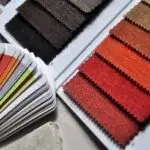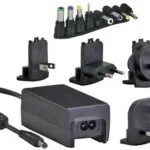If you’re new to sewing or working in fashion design, you may have come across the term Nahttypen and wondered what it means. Simply put, “Nahttypen” is the German word for “types of seams.” While it originates from German, the concept is globally relevant—especially in industries like garment manufacturing, tailoring, textile engineering, and even home decor. Choosing the correct seam type is critical for durability, flexibility, comfort, and aesthetic appeal. In this guide, we’ll explore what Nahttypen are, the different kinds, and how to use them effectively.
What Are Nahttypen?
Nahttypen refer to the different ways in which two or more pieces of fabric are stitched together. Each seam type serves a specific purpose—whether it’s to make a garment more durable, more flexible, or more visually appealing. The type of seam you choose can affect:
- The strength of the garment
- Its look and feel
- How it handles wear and washing
- The ease of production
Understanding Nahttypen allows designers and hobbyists alike to create better, longer-lasting products.
Why Choosing the Right Seam Matters
Just as no two fabrics are the same, not all seams are created equal. Some fabrics stretch, others fray. Some seams need to be hidden, while others are a design feature. Selecting the wrong seam can lead to:
- Garments that rip easily
- Frayed edges
- Visible stitches where you don’t want them
- A poor fit or shape
By choosing the correct Nahttypen, you ensure structural integrity, aesthetic harmony, and long-term functionality in your sewing projects.
Common Nahttypen (Types of Seams) Explained
🔹 1. Plain Seam (Straight Stitch)
The most basic and widely used seam. Two pieces of fabric are stitched right sides together, then opened and pressed flat.
Best for: Lightweight fabrics, general garment construction
Pros: Simple, fast, and low-bulk
Cons: Not very strong without finishing
🔹 2. French Seam
A clean, enclosed seam where raw edges are hidden within a second seam. Popular in high-end and delicate garments.
Best for: Sheer fabrics, silk, lingerie
Pros: Neat, professional finish
Cons: Slightly time-consuming
🔹 3. Flat-Felled Seam
Strong and durable. Typically found in jeans and workwear. The raw edges are enclosed within folds and double-stitched flat.
Best for: Denim, sportswear, uniforms
Pros: Ultra-durable and no fraying
Cons: Bulky for lightweight fabrics
🔹 4. Overlock/Serger Seam
Created using a serger machine that trims, sews, and overcasts the edge in one motion.
Best for: Knit fabrics, stretchy materials
Pros: Fast, clean, professional
Cons: Requires specialized equipment
🔹 5. Double-Stitched Seam
Used when extra reinforcement is needed. Two parallel lines of stitches strengthen the seam.
Best for: Bags, upholstery, industrial fabrics
Pros: High strength
Cons: Visible and less flexible
Specialty Nahttypen for Functional or Decorative Use
🧵 Bound Seam
Edges are enclosed in bias tape or fabric strips—great for unlined jackets or decorative inner finishes.
🧵 Lapped Seam
One fabric edge is lapped over the other, often topstitched. Seen in leatherworking and heavier fabrics.
🧵 Mock Flat-Felled Seam
Mimics the look of a true flat-felled seam but with fewer steps—ideal for lightweight fabrics needing a strong seam.
How to Choose the Right Nahttypen for Your Project?
Here are some key considerations when deciding which seam type to use:
- Fabric Type:
Lightweight vs. heavyweight, stretch vs. rigid, fray-prone vs. stable. - Functionality:
Will the garment experience a lot of movement or strain? - Design Aesthetic:
Do you want the seam to be hidden, flat, or decorative? - Equipment:
Do you have access to a serger or only a basic sewing machine? - Skill Level:
Some seams require precision and practice, while others are beginner-friendly.
Nahttypen in the Fashion and Textile Industry
Professional fashion designers use Nahttypen strategically to balance form and function. For instance:
- Luxury brands often use French seams to hide raw edges and create a refined interior finish.
- Workwear manufacturers favor flat-felled seams for long-lasting durability.
- Activewear brands use overlock or coverstitch seams for stretch and comfort.
Even the stitching thread color can turn a basic seam into a standout design feature.
Tips for Working with Different Nahttypen
- Always press your seams for a crisp finish.
- Use matching thread for invisible seams or contrasting thread for decorative ones.
- Test the seam on a scrap piece of fabric before committing.
- Adjust stitch length and tension based on fabric and seam type.
Tools That Make Sewing Seam Types Easier
To handle a variety of Nahttypen, these tools can be helpful:
- Sewing machine with adjustable presser feet
- Serger/Overlocker for overlock seams
- Seam gauge and measuring tape for accuracy
- Bias tape makers for bound seams
- Fabric clips (instead of pins) for delicate or bulky fabrics
Using Nahttypen in DIY Projects
Whether you’re sewing clothes, accessories, or home décor, understanding Nahttypen helps you level up your craft. Examples include:
- French seams for handmade silk pillowcases
- Overlocked seams for t-shirts and leggings
- Bound seams for unlined tote bags
- Flat-felled seams for denim aprons
Each project benefits from choosing the most suitable seam—both aesthetically and structurally.
Sustainable Sewing and Nahttypen
Sustainable fashion isn’t just about fabrics—it’s also about construction. High-quality Nahttypen extend the life of garments and reduce waste. Stronger seams mean fewer repairs, and well-finished edges resist unraveling. By mastering proper seam techniques, you’re also contributing to a more conscious approach to fashion.
Conclusion: Why Nahttypen Matter More Than You Think
At first glance, seams might seem like mere functional components—but they play a massive role in how garments look, feel, and last. Understanding Nahttypen gives you the power to elevate your sewing, create durable garments, and experiment with design. Whether you’re crafting a couture dress, sportswear, or a DIY pillow cover, knowing your seam types makes all the difference.
So next time you’re at your sewing machine, take a moment to consider the seam. Because when it comes to great design, Nahttypen are where strength meets style.
✅ Keyword Usage Recap:
- “Nahttypen” used:
- In the first paragraph
- Three additional times throughout the content
- In the first paragraph
Integrated naturally for SEO optimization


